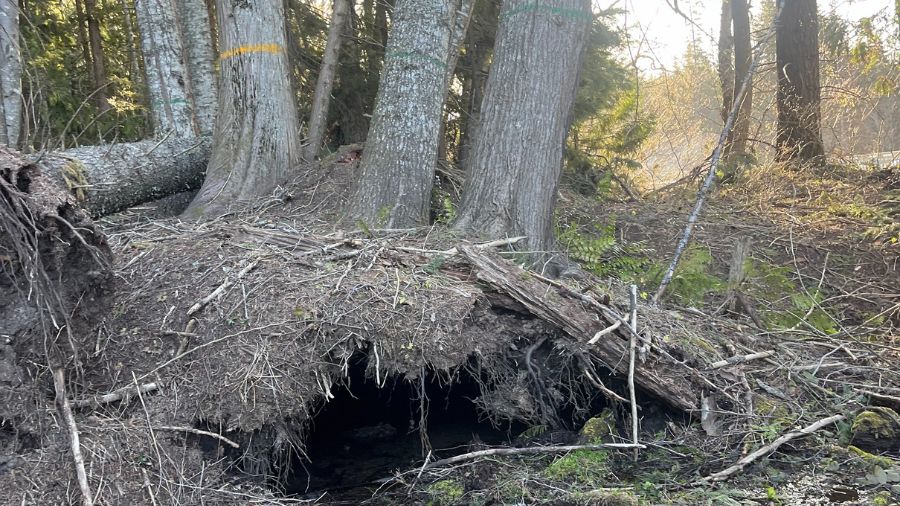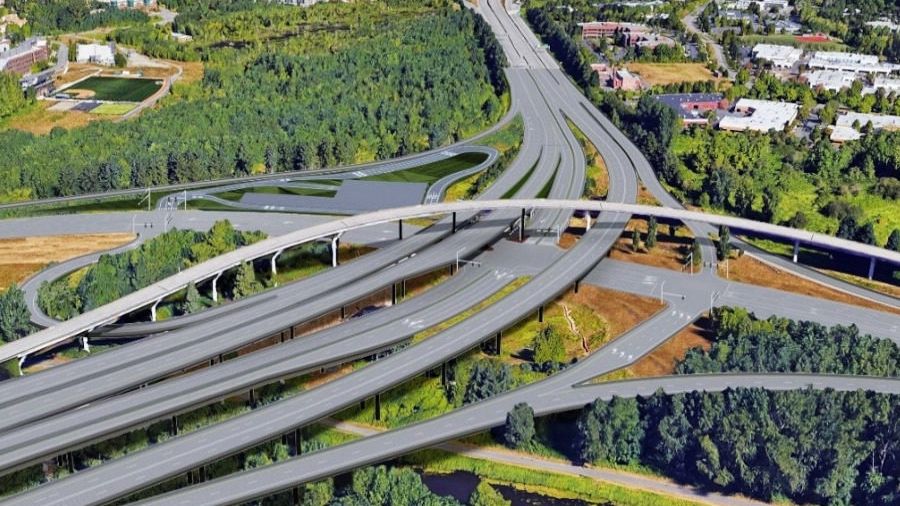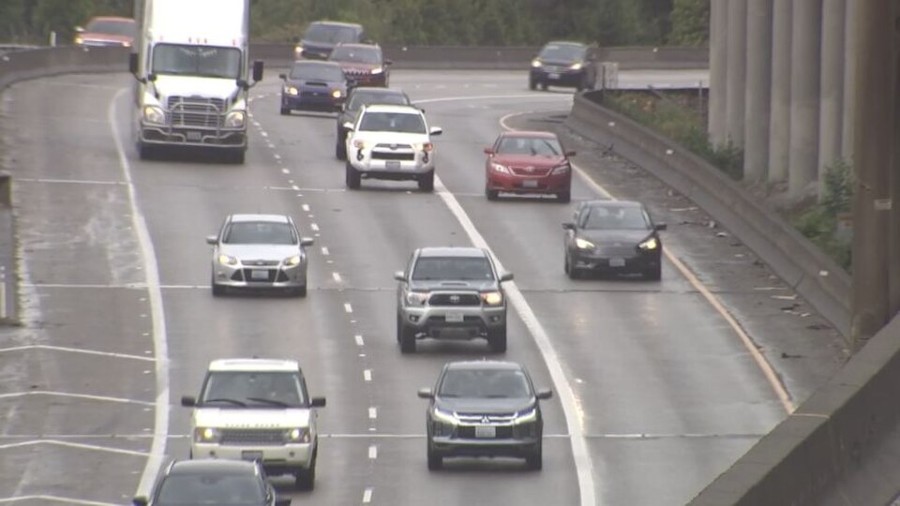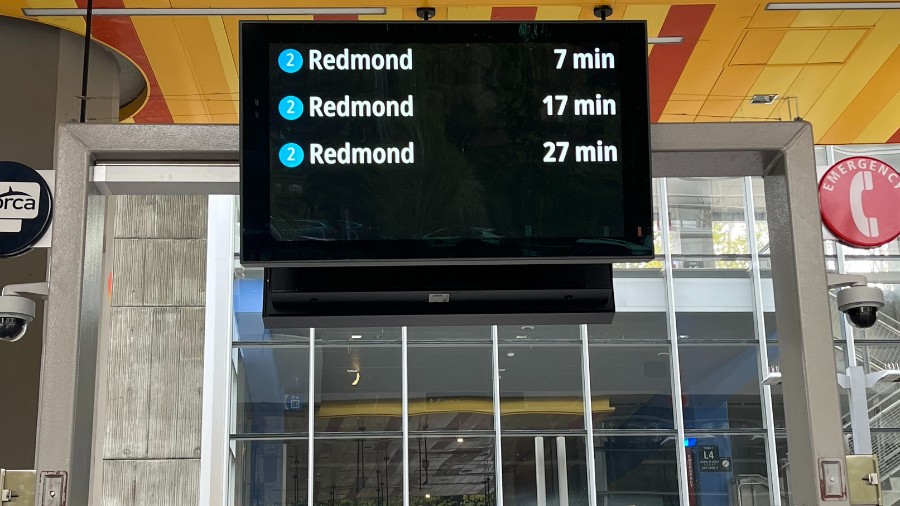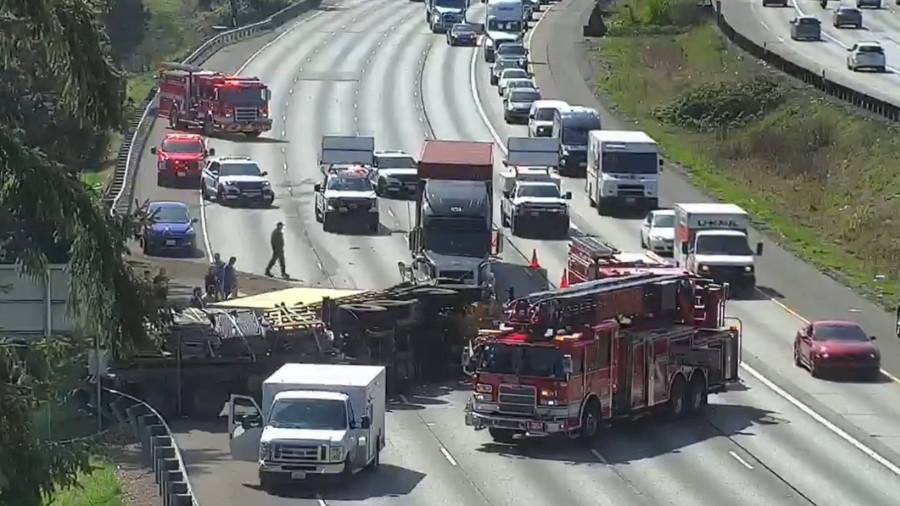Toll revenue still lagging way behind, with a missing $206 million
Dec 15, 2022, 8:46 AM | Updated: 9:14 am

WSDOT signs at the SR 99 tunnel in Seattle. (KIRO 7)
(KIRO 7)
We’ve seen an increase in congestion on the roads since the return to school in the fall, but is that adding up to more money in the toll bank account?
At KIRO Newsradio, we’ve been watching the toll revenues closely since the start of the pandemic. Not only do some of those tolls pay for the construction of the roads, but they also go to improvements along the corridors that will be made in the future.
More Chokepoints: Washington state toll bill fees, penalties return in March
So how are we doing?
First, we have to lay the groundwork on how the state is tracking positive or negative results.
The tolling revenue forecast made in 2019 is our benchmark. It’s what the state expected to take in prior to the pandemic and the shutdowns that followed.
The state revised those numbers after the massive decrease in driving in 2020. When that new forecast wasn’t met in 2021, the forecast was revised again to match the actual demand. When those numbers weren’t reached, the state revised the forecast even further down in 2022.
And when you look at that latest, much lower forecast, the tolling revenue is starting to match or exceed those numbers, which is a positive, but overall the numbers are still not good.
Tolling revenue is off 32% from the original 2019 forecast. More than $206 million that the state expected to take in just never materialized. Though it’s off less than 1% from the latest revised forecast.
By far, the worst-performing corridor is the I-405 Express Lanes, which is off nearly 65% from the original forecast. That’s $57 million missing projected dollars.
But state tolling director Ed Barry told the Washington State Transportation Commission this week the revenues are actually over the revised estimate.
“We also had out there, of course, more traffic in the express toll lanes and more congestion out there which leads to dynamic toll rates to be higher so, of course, that generates more revenue as the toll rates are higher,” he said.
As we have seen this month, we’ve hit the $10-max seven of the last eight mornings.
Another corridor that is seeing an uptick is the 167 HOV Lanes. “We’re seeing more congestion out on the corridor,” Barry said. “The dynamic toll rates are reacting to that. We are seeing higher toll rates as well.”
The 167 toll revenue is running more than 30% above the latest projections, though it is still off 48% from the original 2019 figures, which is an estimated loss of nearly $8 million.
What about the Tacoma Narrows Bridge?
It was the one-tolled corridor that didn’t drop much during the pandemic.
“When you come to the pre-COVID-19 forecast, it was the least affected, and the number comparison in this category is the lowest,” Barry said. “It is only off about 7.5% from the original projections, which is nearly $17 million. It is currently running just under the revised forecast.”
As for the Seattle tunnel, it’s off 27% from the original forecast, but it is trending above the latest forecast over the last few months.
So what’s the takeaway?
It’s going to be hard to replace the missing $206 million in toll revenue.
That’s one of the reasons the state decided to raise some toll prices. The good news is it looks like the drivers are back, but the hole might be too big.
Check out more of Chris’ Chokepoints.


